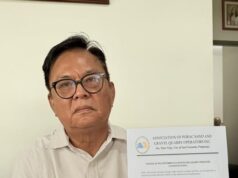“Violence against women cuts across social and economic situations and is deeply embedded in cultures around the world – so much so that millions of women consider it a way of life.” – Cate Johnson in Violence Against Women: An Issue of Human Rights
q q q
In the controversial flick Loretta, the wife cuts the manhood of her husband when she could no longer endure the pain he had inflicted on her. In another movie, Ika-11 na Utos: Mahalin Mo ang Iyong Asawa, Aiko Melendez played a battered wife to abusive husband Gabby Concepcion.
Feminists and health and social workers call it violence against women or VAW.
The Declaration on the Elimination of Violence Against Women (1993) defines violence against women as “any act of gender-based violence that results in, or is likely to result in, physical, sexual or mental harm or suffering to women, including threats of such acts, coercion or arbitrary deprivation of liberty, whether occurring in public or in private life.”
The UN Declaration, however, clarifies that the definition of violence against women should encompass, but not be limited to, acts of physical, sexual, and psychological violence in the family and the community.
These acts include spousal battering, sexual abuse of female children, dowry-related violence, rape including marital rape, and traditional practices harmful to women, such as female genital mutilation.
They also include non-spousal violence, sexual harassment and intimidation at work and in school, trafficking in women, forced prostitution, and violence perpetrated or condoned by the state, such as rape in war.
In the Philippines, Republic Act 9262, more popularly known as the Violence Against Women and their Children Law, was passed in 2004.
It broadened the definition of abuse to include physical, emotional and economic harm.
It also made violence by an intimate partner (anyone with whom a woman has a sexual relationship) a public crime, and made it possible for anyone – not just the victim – to file a case against a perpetrator.
Around the world, at least one in every three women has been beaten, coerced into sex, or abused in some other way – most often by someone she knows, including by her husband or another male family member.
So much so that violence against women is considered “a public health priority” and “a human rights concern.”
The Geneva-based World Health Organization (WHO) claims that violence against women has serious consequences for their physical and mental health.
Abused women, it points out, are more likely to suffer from depression, anxiety, psychosomatic symptoms, eating problems, and sexual dysfunctions.
Violence may affect the reproductive health of women through unplanned pregnancies; precipitating various gynecological problems including chronic pelvic pain and painful intercourse; the increase of sexual risk-taking among adolescents; and the transmission of sexually transmitted infections, including HIV/AIDS.
Since RA 9262 was passed in the Philippines, the number of cases has been steadily increasing.
“From 2006 to the present, there has been a constant increase,” said Senior Superintendent Theresa Ann Cid, of the Philippine National Police (PNP).
In 2011, there were 12,948 reported cases, up from 4,954 cases in 2006 – a rise of more than 150%! – the PNP Women and Children’s Protection Unit noted. From January to April of 2012, 5,629 cases have already been filed.
Violations of RA 9262 make up the largest component of reported acts of violence against women, including rape, sexual assault, and physical injury.
In Davao City, a 47-year-old British national was sued after he allegedly choked and slapped his 18-year-old Filipina live-in partner for refusing to have sex with him last year.
Consultation and referral sheet from the Southern Philippines Medical Center showed that the victim suffered “post-traumatic stress disorder.” The prosecutor found probable cause to charge the British national on the affidavit of the victim, the record of the events and the doctor’s findings.
The 2008 National Demographic Health Survey estimated that one in five Filipino women between the ages of 15 and 49 had experienced physical violence, while 14 percent of women have been physically abused by their husbands.
“A serious cause of concern” is how the United Nations health agency described the level of sexual violence in the Philippines. The country is home to almost 100 million people; it is a traditionally patriarchal, male-dominated society, but there are no ready answers to explain in the recent spike.
“Yes, there is an increase in reported cases, but we cannot say why,” admits Elizabeth Angsioco, chairperson of the Democratic Socialist Women of the Philippines, a national federation of women’s grassroots communities.
“Part of it may be a natural development due to the increased awareness of the laws meant to protect women.”
While violence against women is increasing, there are still cases that are unreported.
The reason: these people believe violence against women is accepted. “There is too much tolerance of violence in our culture,” explains Tet Balay-on, the knowledge management officer of Women’s Crisis Center. “Men think it is part of being a man, women think it is part of being in a relationship.”




